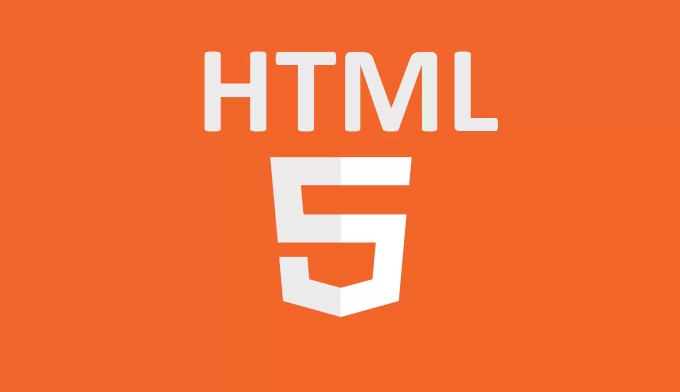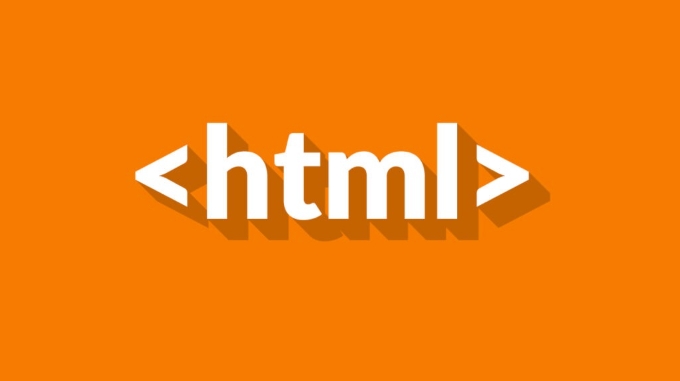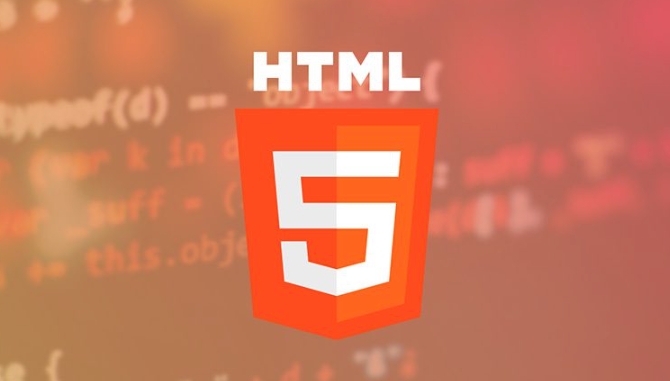When are quotes required for the values of html attributes?
Jun 27, 2025 am 01:58 AMIn HTML, attribute values ??require quotes in most cases, but sometimes they can be omitted. Quotes must be used including when the attribute value contains spaces, special characters or multiple words, such as: src="my photo.jpg", , class="my-class active", otherwise it may lead to parsing errors. Quotes can be omitted when the attribute value is a simple word or number and does not contain spaces or special characters, such as: required, id=myDiv, class=myClass. Reasons for always using quotes include better compatibility, strong readability, avoiding syntax errors and smoother teamwork, such as the use of href="#" and onclick="alert('hi')" will be clearer and more standardized.

In HTML, when do attribute values ??need to be quoted? Simply put: it is required in most cases, but sometimes it can be omitted. However, for the sake of clearness and compatibility of the code, it is recommended to always use quotes.

Quotes must be used
If your property value contains spaces, special characters, or multiple words, it must be enclosed in quotes. for example:

-
<img src="/static/imghw/default1.png" data-src="https://img.php.cn/upload/article/000/000/000/175096073750699.jpeg" class="lazy" alt="When are quotes required for the values of html attributes?" > -
<a href="https://example.com?query=1&name=test"></a>
If you don't put quotes, the browser may misunderstand what you mean and only read the content before the first space, causing the link to be invalid or the image to be unable to load.
In addition, although the HTML5 specification allows for some cases without quotes, it is not possible to not use quotes when multiple class names such as class="my-class active" .

Quotes can be omitted
If the property value is a simple word or number and does not contain spaces, special characters (such as =, , `, ", ', (), etc.), then you can choose not to include quotes. For example:
-
<input required> -
<div id="myDiv"> <li> <code><span class="myClass"></span> - Better compatibility : Older browsers support for quotation-free attributes is unstable.
- Strong readability : you can see the starting and ending positions of the attribute value at a glance.
- Avoid syntax errors : Once there are equal signs or special symbols in the property value, there will be problems without quotation marks.
- Teamwork is smoother : Unify style and reduce understanding costs.
This writing method is legal in HTML5, but it is prone to errors in actual development, especially when multiple people collaborate, others may accidentally modify the format, resulting in parsing errors.
Why is it recommended to always use quotes?
Although quotes can sometimes be omitted, this risk outweighs convenience. Here are a few reasons to always put quotes:
For example, the following line of code:
<a href=# onclick=alert('hi')>
Although it can run, the structure is chaotic. Change to:
<a href="#" onclick="alert('hi')">
It's much clearer.
Basically that's it. Whether to add quotation marks to HTML attribute values ??can sometimes be processed flexibly, but developing the habit of adding quotation marks will make you less trapped.
The above is the detailed content of When are quotes required for the values of html attributes?. For more information, please follow other related articles on the PHP Chinese website!

Hot AI Tools

Undress AI Tool
Undress images for free

Undresser.AI Undress
AI-powered app for creating realistic nude photos

AI Clothes Remover
Online AI tool for removing clothes from photos.

Clothoff.io
AI clothes remover

Video Face Swap
Swap faces in any video effortlessly with our completely free AI face swap tool!

Hot Article

Hot Tools

Notepad++7.3.1
Easy-to-use and free code editor

SublimeText3 Chinese version
Chinese version, very easy to use

Zend Studio 13.0.1
Powerful PHP integrated development environment

Dreamweaver CS6
Visual web development tools

SublimeText3 Mac version
God-level code editing software (SublimeText3)

Hot Topics
 Explain the purpose of the role attribute in ARIA.
Jun 14, 2025 am 12:35 AM
Explain the purpose of the role attribute in ARIA.
Jun 14, 2025 am 12:35 AM
ARIA's role attribute is used to define the role of web elements and improve accessibility. 1. Role attribute helps assistive technology to understand the functions of elements, such as buttons, navigation, etc. 2. Use role attributes to assign specific roles to non-semantic HTML elements. 3. The role attribute should be consistent with the element behavior and be verified by the accessibility tool test.
 HTML and Design: Creating the Visual Layout of Websites
Jun 14, 2025 am 12:39 AM
HTML and Design: Creating the Visual Layout of Websites
Jun 14, 2025 am 12:39 AM
How to create a website layout? 1. Use HTML tags to define the content structure, such as, ,. 2. Control styles and positions through CSS, using box model, float or Flexbox layout. 3. Optimize performance, reduce HTTP requests, use cache and optimize images, and ensure responsive design.
 How do I stay up-to-date with the latest HTML standards and best practices?
Jun 20, 2025 am 08:33 AM
How do I stay up-to-date with the latest HTML standards and best practices?
Jun 20, 2025 am 08:33 AM
The key to keep up with HTML standards and best practices is to do it intentionally rather than follow it blindly. First, follow the summary or update logs of official sources such as WHATWG and W3C, understand new tags (such as) and attributes, and use them as references to solve difficult problems; second, subscribe to trusted web development newsletters and blogs, spend 10-15 minutes a week to browse updates, focus on actual use cases rather than just collecting articles; second, use developer tools and linters such as HTMLHint to optimize the code structure through instant feedback; finally, interact with the developer community, share experiences and learn other people's practical skills, so as to continuously improve HTML skills.
 How do I use the element to represent the main content of a document?
Jun 19, 2025 pm 11:09 PM
How do I use the element to represent the main content of a document?
Jun 19, 2025 pm 11:09 PM
The reason for using tags is to improve the semantic structure and accessibility of web pages, make it easier for screen readers and search engines to understand page content, and allow users to quickly jump to core content. Here are the key points: 1. Each page should contain only one element; 2. It should not include content that is repeated across pages (such as sidebars or footers); 3. It can be used in conjunction with ARIA properties to enhance accessibility. Usually located after and before, it is used to wrap unique page content, such as articles, forms or product details, and should be avoided in, or in; to improve accessibility, aria-labeledby or aria-label can be used to clearly identify parts.
 How do I create a basic HTML document?
Jun 19, 2025 pm 11:01 PM
How do I create a basic HTML document?
Jun 19, 2025 pm 11:01 PM
To create a basic HTML document, you first need to understand its basic structure and write code in a standard format. 1. Use the declaration document type at the beginning; 2. Use the tag to wrap the entire content; 3. Include and two main parts in it, which are used to store metadata such as titles, style sheet links, etc., and include user-visible content such as titles, paragraphs, pictures and links; 4. Save the file in .html format and open the viewing effect in the browser; 5. Then you can gradually add more elements to enrich the page content. Follow these steps to quickly build a basic web page.
 What is an HTML tag?
Jun 13, 2025 am 12:36 AM
What is an HTML tag?
Jun 13, 2025 am 12:36 AM
HTMLtagsareessentialforstructuringwebpages.Theydefinecontentandlayoutusinganglebrackets,ofteninpairslikeand,withsomebeingself-closinglike.HTMLtagsarecrucialforcreatingstructured,accessible,andSEO-friendlywebpages.
 How do I create checkboxes in HTML using the element?
Jun 19, 2025 pm 11:41 PM
How do I create checkboxes in HTML using the element?
Jun 19, 2025 pm 11:41 PM
To create an HTML checkbox, use the type attribute to set the element of the checkbox. 1. The basic structure includes id, name and label tags to ensure that clicking text can switch options; 2. Multiple related check boxes should use the same name but different values, and wrap them with fieldset to improve accessibility; 3. Hide native controls when customizing styles and use CSS to design alternative elements while maintaining the complete functions; 4. Ensure availability, pair labels, support keyboard navigation, and avoid relying on only visual prompts. The above steps can help developers correctly implement checkbox components that have both functional and aesthetics.
 How do I minimize the size of HTML files?
Jun 24, 2025 am 12:53 AM
How do I minimize the size of HTML files?
Jun 24, 2025 am 12:53 AM
To reduce the size of HTML files, you need to clean up redundant code, compress content, and optimize structure. 1. Delete unused tags, comments and extra blanks to reduce volume; 2. Move inline CSS and JavaScript to external files and merge multiple scripts or style blocks; 3. Simplify label syntax without affecting parsing, such as omitting optional closed tags or using short attributes; 4. After cleaning, enable server-side compression technologies such as Gzip or Brotli to further reduce the transmission volume. These steps can significantly improve page loading performance without sacrificing functionality.






